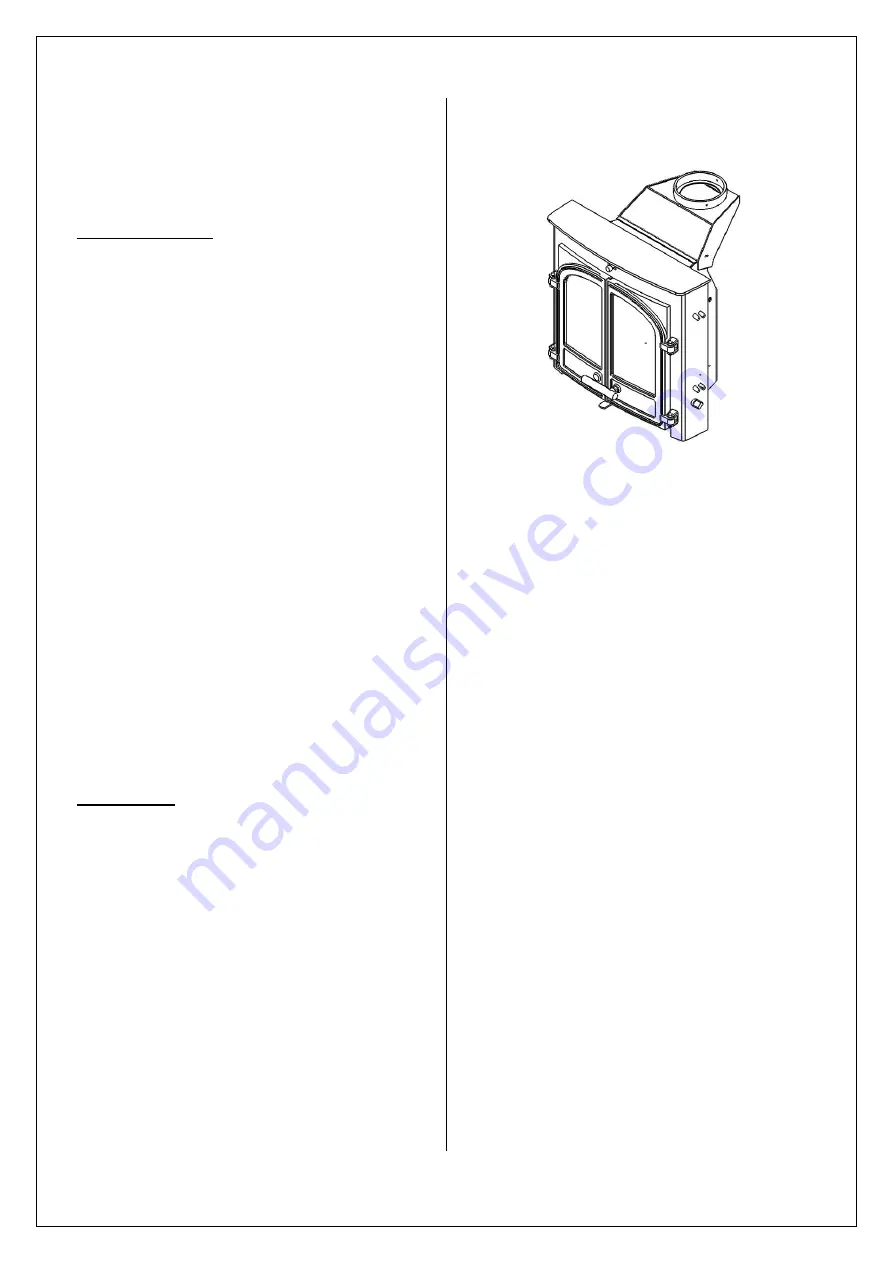
JINHCN05 RevE 22/07/14
Check for flue/chimney blockage and clean if
required.
Do not attempt to relight the fire until the cause
has been identified and corrected.
If necessary seek professional advice.
A
DVERSE
W
EATHER
In a small number of installations, occasional local
weather conditions (e.g. wind from a particular
direction) may cause downdraught in the flue and
the stove to emit fumes. In these circumstances the
stove should not be used. A professional flue
installer will be able to advise on solutions to this
problem (e.g. anti-downdraught cowl).
DO NOT FIT AN EXTRACTOR FAN IN THE SAME
ROOM AS THIS APPLIANCE.
IN THE EVENT OF A CHIMNEY FIRE -
Raise the alarm
Call the Fire Brigade
Close appliance air controls
Move furniture, ornaments etc away
Place a fireguard in front of stove
Check the chimney breast for signs of excessive
heat.
If the wall is becoming excessively hot, move
furniture away. Ensure the Fire Brigade can gain
access to your roof space in order to check for fire
spread.
Chimney
Please
check
the
suitability
of
any
fireplace/surround for closed solid fuel appliances
before installing this appliance. Cleanburn Stoves
Ltd cannot be held responsible for any fault arising
through incorrect use or installation.
Fire surround back panels suitable for solid fuel are
usually in three sections and slabbed. Many fire
surrounds are suitable only for use with gas and
electric fires and therefore not suitable for solid
fuel.
This product is designed to fit into a standard 16
inch fireback. An adaptor for flexible flue liners
(150mm) is also available if required. The upper
section of the fireback may need to be removed to
fit the flue adaptor. The chimney height and the
position of the chimney terminal should conform to
Building Regulations.
Check that the chimney is in good condition, dry,
free from cracks and obstructions. The diameter of
the flue should not be less than 150mm and not
more than 230mm. If any of these requirements are
not met, the chimney should be lined by a suitable
method.
The chimney must be swept before connection to
the stove.
Where the chimney is believed to have previously
served an open fire installation, it is possible that
the higher flue gas temperature from the stove may
loosen deposits that were previously firmly
adhered, with the consequent risk of flue blockage.
It is therefore recommended that the chimney is
swept a second time within a month of regular use
after installation.
If you have any doubts about the suitability of your
chimney, consult your local dealer/stockist.
If there is no existing chimney then either a
prefabricated block chimney in accordance with
Building Regulations Approved Document J, or a
twin-walled insulated stainless steel flue to BS4543
can be used. These chimneys must be fitted in
accordance with the manufacturer’s instructions
and Building Regulations.


































